The ricotta castagnole are typical Carnival sweets with a very soft texture and a delicate and aromatic flavor. Everyone knows the classic castagnole, which have a denser dough and are covered with granulated sugar, and that in the oven version, can also be colored and flavored with your favorite liquor. Ricotta castagnole, unlike the classic version, are fried in spoonfuls in hot oil, immediately taking on a nice round and regular shape. Just like my famous quick spoon fritters, the dough for ricotta castagnole is very quick to prepare – it only requires a bowl and a spoon – and you could almost make it in the time it takes for the oil to reach temperature. The ricotta makes them incredibly soft, and their fluffiness remains intact even after a couple of days, which is quite rare for fried desserts. Like all the recipes on my blog, ricotta castagnole can also be made with gluten-free flour: I have tried both with very fine rice flour and with a specific gluten-free flour blend for desserts, and the result has been excellent in both cases!
You may also be interested in:
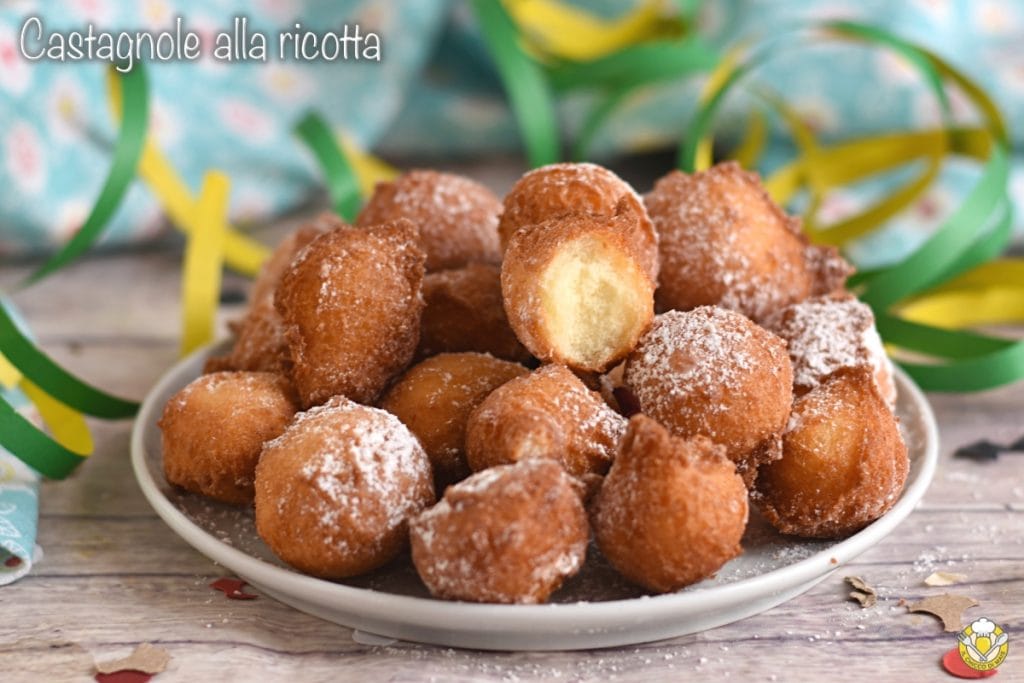
- Difficulty: Very easy
- Cost: Very cheap
- Preparation time: 10 Minutes
- Portions: 40 Pieces
- Cooking methods: Frying
- Cuisine: Italian
- Seasonality: Carnival
- Energy 34.40 (Kcal)
- Carbohydrates 5.34 (g) of which sugars 2.34 (g)
- Proteins 1.22 (g)
- Fat 0.95 (g) of which saturated 0.42 (g)of which unsaturated 0.47 (g)
- Fibers 0.09 (g)
- Sodium 17.82 (mg)
Indicative values for a portion of 12 g processed in an automated way starting from the nutritional information available on the CREA* and FoodData Central** databases. It is not food and / or nutritional advice.
* CREATES Food and Nutrition Research Center: https://www.crea.gov.it/alimenti-e-nutrizione https://www.alimentinutrizione.it ** U.S. Department of Agriculture, Agricultural Research Service. FoodData Central, 2019. https://fdc.nal.usda.gov
Ingredients for about 40 ricotta castagnole
If you are celiac, you can replace the all-purpose flour with equal weight of finely ground rice flour or a gluten-free flour mix. However, ensure that the following ingredients have the “gluten-free” label: rice flour, baking powder, powdered sugar.
- 2 eggs (medium)
- 5.3 oz ricotta cheese (sheep or cow)
- 2/3 cup granulated sugar
- 1 1/4 cup all-purpose flour (or gluten-free flour)
- 2 1/2 tsp baking powder (half a packet)
- 1 pinch salt
- 1/2 lemon (only grated zest)
- 2 tbsp rum (or milk)
- as needed peanut oil (for frying)
- as needed powdered sugar (for garnish)
Tools
- 1 Bowl
- 1 Wooden Spoon
- 1 Sieve
- 1 Pan non-stick and deep
- 1 Tongs for frying
- Paper Towels
How to prepare soft ricotta castagnole
To prepare the ricotta castagnole, start by putting the ricotta with the sugar and a pinch of salt in a bowl (1). Work for a few minutes with a wooden spoon, until you get a creamy mixture (2). Then add the first egg (3) and continue to mix.

Once well blended with the ricotta mixture, add the second egg (4) and mix carefully. Finally, add the grated lemon zest and the rum (5). If you don’t want to use alcohol, you can replace the rum with the same amount of milk. Also add the grated lemon zest (6).

Briefly mix, then sieve the flour combined with the baking powder into the bowl (7). With the wooden spoon, mix it carefully into the dough. You should obtain a homogeneous and fairly compact mixture that sticks to the spoon (8). If it’s too hard, you can add a little milk; if it’s too liquid, a little flour. Small differences in the dough’s consistency can be due to the type of ricotta being firmer or more watery.
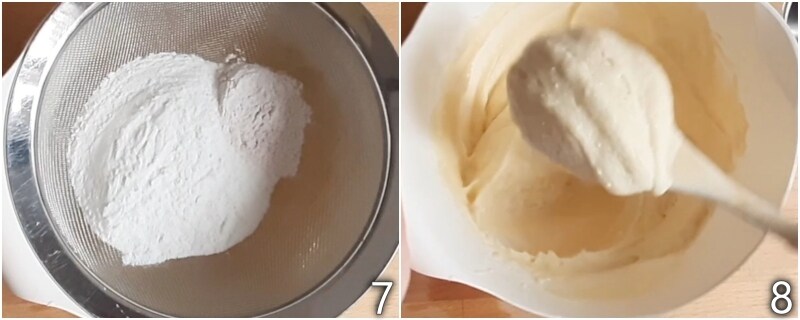
Heat plenty of peanut oil in a deep enough pan or a fryer (if you have a kitchen thermometer, the optimal temperature is 340°F). Take half a tablespoon of dough at a time and, with the help of another spoon, let it slide into the hot oil (9). Upon contact with the oil, the ricotta castagnole will puff up and take on a nice regular shape. Cook them for about 3-4 minutes, turning them often (10).
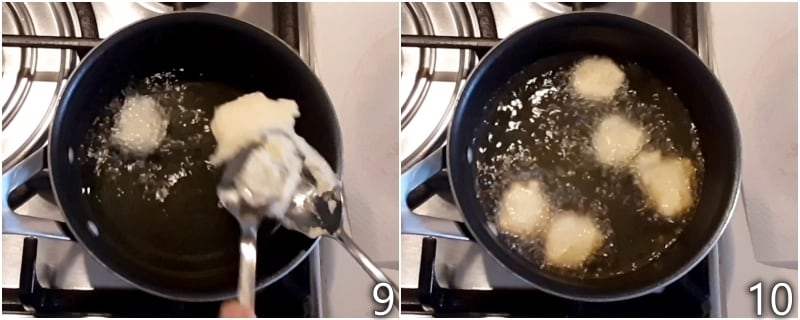
When they are golden on all sides, drain them with tongs for frying (11) or with a skimmer and transfer them to a plate or tray lined with paper towels. Let them dry well (but if you have fried at the right temperature, you’ll see that ricotta castagnole absorb very little oil), then sprinkle them with powdered sugar (12).
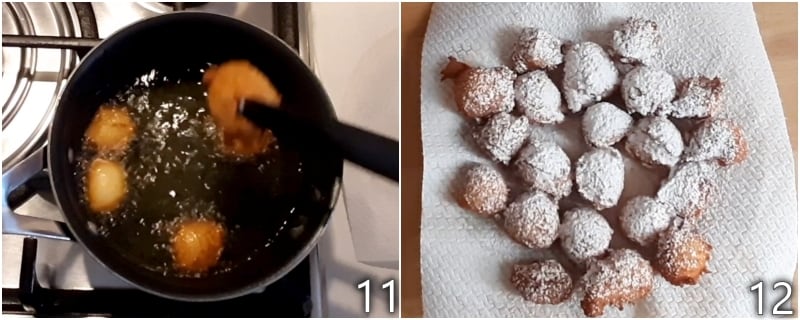
Ricotta castagnole, served freshly made, are irresistible, soft, and fragrant. They remain soft and delicious even in the following days.
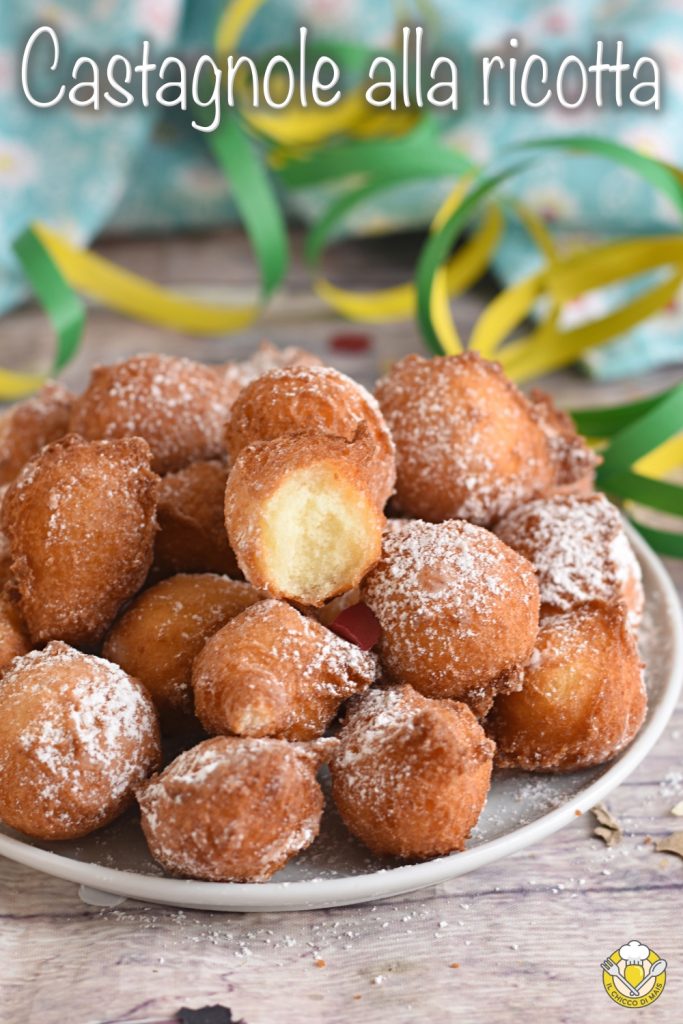
Storage
You can store ricotta castagnole at room temperature, under a glass dome or in a cake container to preserve their softness.
Tips and Variations
As with many fried desserts, cooking is the most delicate part because it is not easy to control the oil’s temperature. The sugar in the dough, when it comes into contact with the hot oil, tends to darken very quickly, giving the impression that the fritters are cooked when they may not be entirely. My advice is therefore not to make the dough portions too large, so that they cook evenly inside, and to turn them often.
To prepare gluten-free ricotta castagnole, as I mentioned at the beginning, you can use either very fine rice flour or a gluten-free pastry mix. I have experimented with both versions: with rice flour, the fritters are crispier on the outside while maintaining a soft interior, whereas with the pastry mix (I used Nutrifree), the outer part is as soft as the inside.
FAQ (Questions and Answers)
Can I bake these castagnole in the oven?
No, this type of castagnole cannot be baked in the oven or in an air fryer, because the dough is too soft and would not hold its shape. For oven-baked castagnole, you can follow this recipe.

